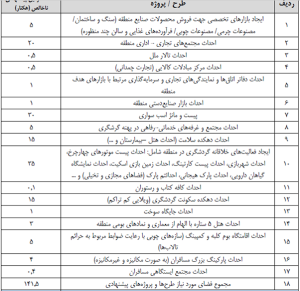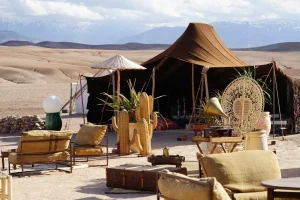Maps and Zones of the Region
Here, you will get acquainted with the investment potentials in Incheh Boroun.
Slider Guide
To view the content of each section, click on its title. The related content will automatically be displayed, and you can navigate between sections.
-
 Logistics and Transportation
Logistics and Transportation
-
 Industry
Industry
-
 Services - Administrative
Services - Administrative
-
 Tourism - Commercial
Tourism - Commercial
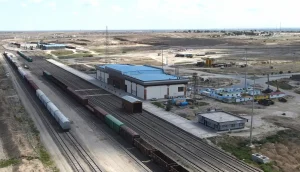
The Incheh Boroun Free Trade Zone, located near the Iran-Turkmenistan border, serves as Iran’s gateway to Central Asian countries. By leveraging its logistical advantages and the legal benefits of free trade zones, it has the potential to become a hub for industry, production, and international trade in the region. Establishing and developing the logistics village in the Incheh Boroun Free Trade Zone can play a significant role in achieving this goal. 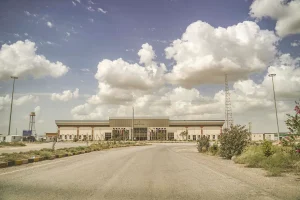
By the horizon of 2041, the transfer of 20 million tons of cargo to/from the Incheh Boroun Free Trade Zone via railways and road networks is projected. Of this volume, imports account for 6.5 million tons, exports for 9.3 million tons, transit for 2 million tons, and cargo movement for the region’s internal consumption for 2.2 million tons. To provide the necessary infrastructure for handling this volume, two logistical zones have been designated: the Border Logistics Village and the Heavy Industries Logistics Zone.
In the Border Logistics Village, 3 million tons of crude oil and 4.5 million tons of commercial goods will be handled. The table below shows the required terminal and warehouse spaces in the Border Logistics Village. In total, 450 hectares in this village have been allocated to terminals and warehouses.

In addition to terminals and warehouses, the Border Logistics Village of the region includes other components such as a railway station and shunting yard, value-added workshops, a truck park (road transport center), customs, and temporary customs warehouses. The table below estimates the space requirements for each of these areas based on the forecasted cargo for this village. In total, the area of the Border Logistics Village is 1,150 hectares.
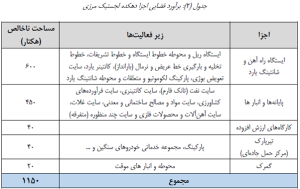
Another logistical area of the region is the Heavy Industries Logistics Zone, which provides the necessary infrastructure for handling 2 million tons of petrochemical products, 4.5 million tons of imported iron ore from Kazakhstan, and 2.5 million tons of final steel products. This zone includes a railway station and shunting yard, terminals and warehouses, and a truck park (road transport center). The estimated space for this zone, based on the proposed cargo, is 1,000 hectares. In total, the estimated space for the Incheh Boroun Free Trade Zone’s logistics areas is 2,150 hectares.

The Incheh Boroun railway station has 7 main tracks, totaling 8,355 meters, and one siding track with a length of 4,236 meters in this area. Within the station’s vicinity, there are three sites: Behdis Silos (with a 6,000-ton capacity), oil unloading facilities (oil unloading pump), and a loading and unloading area (capable of unloading, loading, and storing bulk minerals). This area will have the potential to serve as a driving force for economic development in the Incheh Boroun Free Trade Zone, contributing to economic dynamism and breaking the geographical isolation of the province, linking it with surrounding provinces such as Mazandaran, North and Razavi Khorasan, and Semnan.
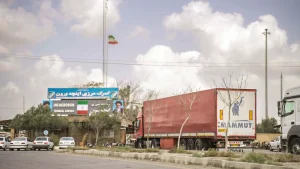
According to the objectives set for the Incheh Boroun Free Trade Zone, by the year 2041, 1,600 industrial units are projected. The table below outlines these units by the proposed industries. The area required for the establishment of these industrial units is 3,000 hectares.

In addition to the establishment of industrial units, two programs have been proposed in this plan: the construction of a steel complex with a capacity of 2.5 million tons per year and the construction of a petrochemical industrial park with a capacity of 2 million tons per year. Based on the case studies conducted in this regard, 2,000 hectares have been allocated for the steel complex and 1,100 hectares for the petrochemical complex. In total, the estimated land area required for industry in the Incheh Boroun Free Trade Zone is 6,100 hectares.

The table below presents the proposed projects in the Services – Administrative Zone, along with the proposed land area for each. The land area required for these projects is 72.5 hectares. Given the importance of green spaces within the Incheh Boroun Free Trade Zone and the wide proposed streets in this area, 145 hectares of land will be needed. Additionally, 125 hectares have been allocated for other projects and plans (future development reserve for services and administrative activities). In total, the estimated land area for the Services – Administrative Zone is 270 hectares.
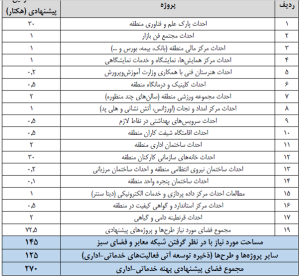

Tourism is one of the main sectors of development in the Incheh Boroun Free Trade Zone, making attention to this component essential. In relation to the land of the Incheh Boroun Free Trade Zone, three sub-criteria have been considered: tourist attractions, tourism corridors, and tourism infrastructure. The Alma Gol, Ala Gol, and Aji Gol wetlands are the most important tourist attractions around the region. The proximity of these wetlands to the border and border facilities enhances the area’s potential to host both domestic and international tourists, fostering interactions with the city of Incheh Boroun and contributing to its development and expansion. 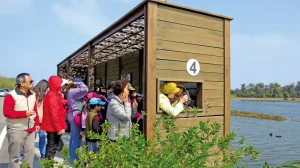
The Incheh Boroun Border Bazaar is considered one of the tourist attractions of the Incheh Boroun Free Trade Zone. It is located in the border area between Iran and Turkmenistan, adjacent to the Incheh Boroun customs. Due to the shared cultural interests and affinities of the people of Iran and Turkmenistan, it can play a significant role in revitalizing this region and even the surrounding areas.

The passage of the railway line through this region will also assist in exporting domestic goods and products through the export terminal for handicrafts to neighboring countries in Central Asia, which share many cultural ties with Iran.

For the proposed projects in the Tourism – Commercial Zone of the Incheh Boroun Free Trade Zone, 283 hectares of land are required. Additionally, 157 hectares have been allocated for other projects and plans (future development reserve for tourism-commercial activities). In total, 440 hectares of land have been estimated for the Tourism – Commercial Zone.
